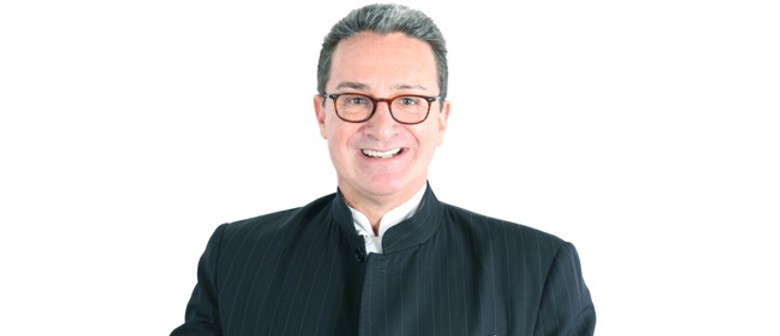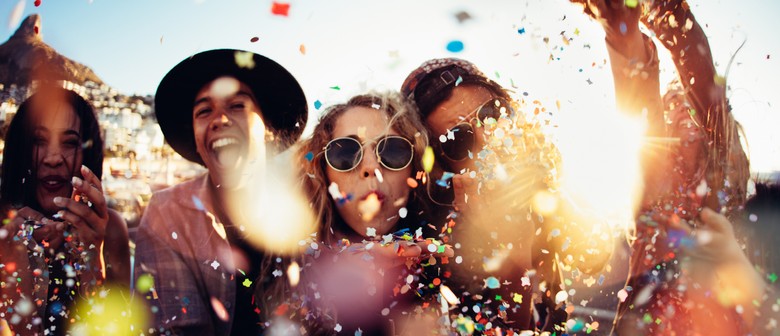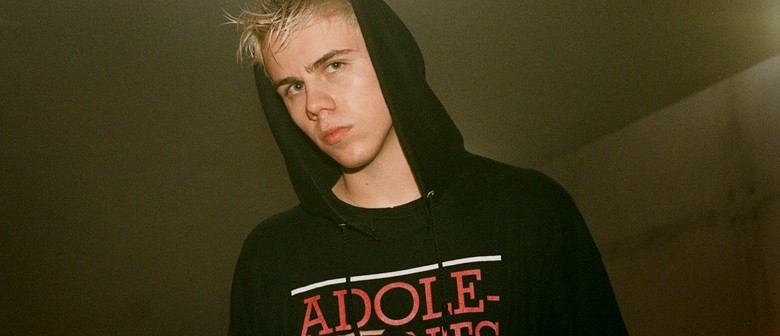Beginning this month, VIVID Sydney will take over the city’s antipodean winter after dark. Now in its fifth year, the two weeks of lights, music and ideas is bigger than ever, we chat to Ignatius Jones, Vivid’s Creative Advisor, about how Vivid became a harmonised hub for both investors and artists, how it became a victim of its own success before the expansion and why this year’s event is more progressive than ever before.
You played a major role in the creation of numerous sporting opening and closing ceremonies as well as the opening ceremony of the Shanghai 2010 World Expo, the creating of The Australian Outback Spectacular on the Gold Coast and a number of ceremonies for the LGBT community, are you one of the busiest in the business?
Don’t even start (laughs). I’ve got so much going on at the moment and Vivid has tripled in size really, really quickly so we’re running as hard as we can to keep up.
The issue has been I’m either doing a job that seven people should do or I’m doing seven jobs at once. So, when I have a single job, like doing an Olympic ceremony or something, I am really multi-tasking. Even then, when I was doing the Vancouver Olympics, Shanghai Expo came on board halfway through it, we’d been trying for that much longer than we had on the Vancouver one but I wasn’t going to let it go. I did a lot of travelling that year.
What kind of hours were you doing at that point?
Pretty well seven days a week, fourteen hours a day. Not a lot of sleep. In fact, it’s been a little bit relaxing coming back to Australia - but a lot of fun too.
But what first drew you to Vivid Sydney in 2010 was?
That’s a really good question [laughs], my friends! I left Australia in 2002 - that was a busy year, wow. I did the New Year’s Eve and I went to East Timor to put on the Independent ceremony there, came back here to do the Gay Games and then did the Asian Games in Kata before doing the Shanghai Expo; a lot of people I had worked with on New Year’s Eve were now working on Destination New South Wales as it was and they said we’d love for you to come lend a hand on Vivid. I said ‘what’s it about’ and nobody could tell me. I could see that was my first job, making sure that everybody knew what Vivid was about. I got them to give me every last bit of research and focus grouping and opinion polls to pour over for a couple of weeks, just to see what people thought, what people liked and where they thought it should be going.
Can you tell us about the driving force behind Vivid Sydney’s theme this year?
Something like Vivid which is a really new paradigm in the way festivals work, it’s a paradigm in that it ‘s all about – and it sounds terrible for I suppose, arty people to be talking about it – it’s really nowadays about economic impact, return on investment, all of that kind of stuff. No one gives you money for nothing, without money there ain’t [sic] art. It really is about making sure that everyone is happy, your investors receive a return on their investment and that the public has a ball, the great thing about it is that it’s quantifiable.
It is hard to juggle your artistic integrity whilst keeping investors happy?
It is and it isn’t. Nowadays the investors actually know that if they plaster their logo over everything that the public see right through it. For instance, Intel who are a partner of Vivid this year, are so careful about the way things are branded and conscious of the way people see them. It’s a great thing, they get that first and foremost and they actually understand that if they aren’t genuinely giving something to the public, the public will know, the public isn’t stupid. That’s I think people often forget about the public, they really underestimate them, the public ain’t dumb!
The theme of Vivid is always the same, it is really not about ads per se, it is about where art meets commerce and technology, how the world at large connects with art. Nowadays creativity has become such an important factor, it’s one of the areas where western worlds still lead - where it’s going to be a long time before China catches up. It’s just because China works in a different way and don’t get me wrong I love the Chinese and I worked there for several years, but they work in a very different way. So Vivid is devoted to fostering creativity in all of those industries for which it is important, architecture, fashion, television, computer animation, photography… The wonderful thing about vivid is we are not associated with Arts Australia, we are associated with the department of trading industry, this is where I think it’s the real world.
I consider myself an artist but since 1992 my art has been really involved with the public and interfacing with the real world. I think that is where Vivid is so different: we count how many people come to Vivid, we count how many people come from interstate and from around the world – that of course in quantifiable and we can go to our bosses and to our clients and say well 25,000 unique visitors came from interstate and overseas, that to the state of New South Wales equals so many millions of dollars. It also brings a lot of creative industry types to the city and they see all the different industries all working in a close proximity. Of all the industries, the creative are the ones that are the most collaborative. We’re getting a lot of them coming to Sydney to set up, and that again is a real push, it’s a beautiful city, it has such a fantastic climate, if we didn’t have such a mild winter we wouldn’t be able to do Vivid! Can you imagine trying to do Vivid in Canada? It adds to the uniqueness of the city.
How much planning goes into the engineering and logistics in the lead-up to Vivid?
A hell of a lot. When we say it’s about music, ideas and lights, it really is, that’s how it’s divided up. Each of those areas is taken care of by a different entity. In fact, what has happened is that each of those areas has outgrown that entity, which is a fantastic thing. It’s actually what we were hoping would happen. This year for instance with Vivid Music, it happens at the Opera House and only for the first week as has been for the past four Vivids, but it’s now expanded. The Seymour Theatre has come on board with a very different type of music program, it’s avant-garde, much more improvisational, electronic, certainly what the Opera House has been programming has been very successful, it’s rare that you sell out the Concert Hall for a couple of gigs [for Kraftwerk] in, I think it was four minutes. The Cure sold out in twenty-two minutes. I’ll be very keen to see what happens with the two expansions into Darling Harbour .Last year Vivid started to become a little bit of a victim of its own success on the last weekend, in that we got so crowded that we had to turn the lights off for a minute. Because you couldn’t move, down in Circular Quay everyone was so thrilled with all the fantastic projections on the buildings. This year, it goes much, much further around into Walsh Bay. Perhaps not next year but in the next couple of years we will spread through Barangaroo and meet up with Darling Harbour to create the notorious creative crescent everyone’s been talking about.
How do you feel this year’s Vivid will hold up against last year, given the venue and event expansions?
There’s that whole thing when you ask a performer their favourite show and they always say the one that they’re doing. One of Vivid’s real qualities is that every year we are better and more forward-looking. Even if we talk about the past, we talk about it in terms of the future. Because it is so forward-looking, each subsequent year is the best one.
There’s no question that this one is the biggest; it’s tripled in size geographically, but there’s also things happening that have never happened before. The music program expanded, but the ideas program, we had 60 forums and keynotes last year; last time I checked we were at 150, and I wouldn’t be surprised if we don’t get 180. This is not us going out and begging people to come, this is people coming to us. That’s what’s happened again with Darling Harbour and North Sydney, we were certainly thrilled to have them on board because it’s enabled us to do a lot more.
In the early ‘70s to late ‘80s you were the lead vocalist and contortionist for Jimmy and The Boys, how much of what you learned as performer in those years contributes to your current work?
I come from a theatre family, we were essentially mountebanks in the oldest sense of the word. If there was a chair over there we’d jump on top of it, singing and dancing and holding our legs behind our heads. My sister is a performer, as am I and my niece runs her own acrobatic company. What that does, when you grow up in the business, is it really gives you a sense of show business as a business. If the people don’t clap, you don’t eat. In the west where for a long time art was, artists were treated as one step above thieves, things have turned around now, something has happened in Ivory Towers and now it’s done by elites and if the common person doesn’t understand it, he’s stupid. Whereas where all my family come from, we were as important to society as the blacksmiths, or the bankers or the lawyers or the bakers or the candlestick makers, we have a very I suppose commonsense attitude to the art and to performance, I think that’s been a really important thing.
Can you still pull your contortionist poses?I’ve had a hip replaced and an ankle replaced so the lesson there is: If you’re going to be a contortionist, be careful.
VIVID runs from May 24 to June 10.
- Poppy Reid





